Move over Beverly Hillbillies, N.B. has its own rags-to-riches tale about oil
In the 1880s Albert Mines was first site of oil and gas extraction in the world

Today Albert Mines may look like any roadside lot with a mix of grassy space and woods, but this 324 hectare site south of Hillsboroughhas a very important place in history.
In the 1800s, this spot on the Albert Mines Road, about sevenkilometres inland from Hopewell Cape, was the site of the "first commercial extraction of petroleum products anywhere in the world," according tothe Albert County Museum.
"The story of gasoline, petroleum, diesel, kerosene literally all of that started effectively where we're standing right now," said Moncton historian and educator James Upham.
All that is left of what used to be a busy village are old mine shafts, tailings of crushed rock and mining waste along withthe remnants of homes, a school and a church.
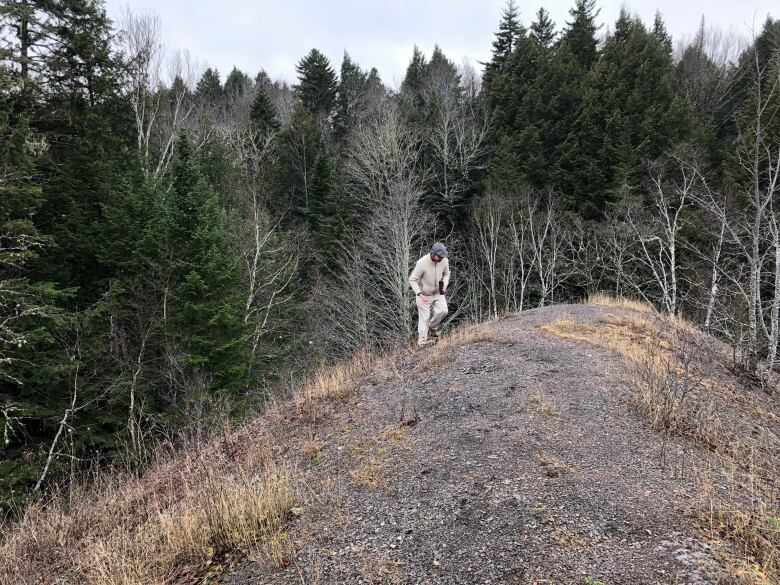
Hundreds of people lived and worked in the mining town from about 1850 until 1880,when the mine closed, Uphamexplained.
"A whole generation grew up here watching what we would now consider to be the modern world get literally birthed from the soil from the earth of Albert County."
A man named Gesnerand a rock called albertite
The story of Albert Mines all started with a curious doctor from Nova Scotia named Abraham Gesner. In addition to studying medicine, he also loved rocksand completed a geological survey of New Brunswick between 1838 and 1842.
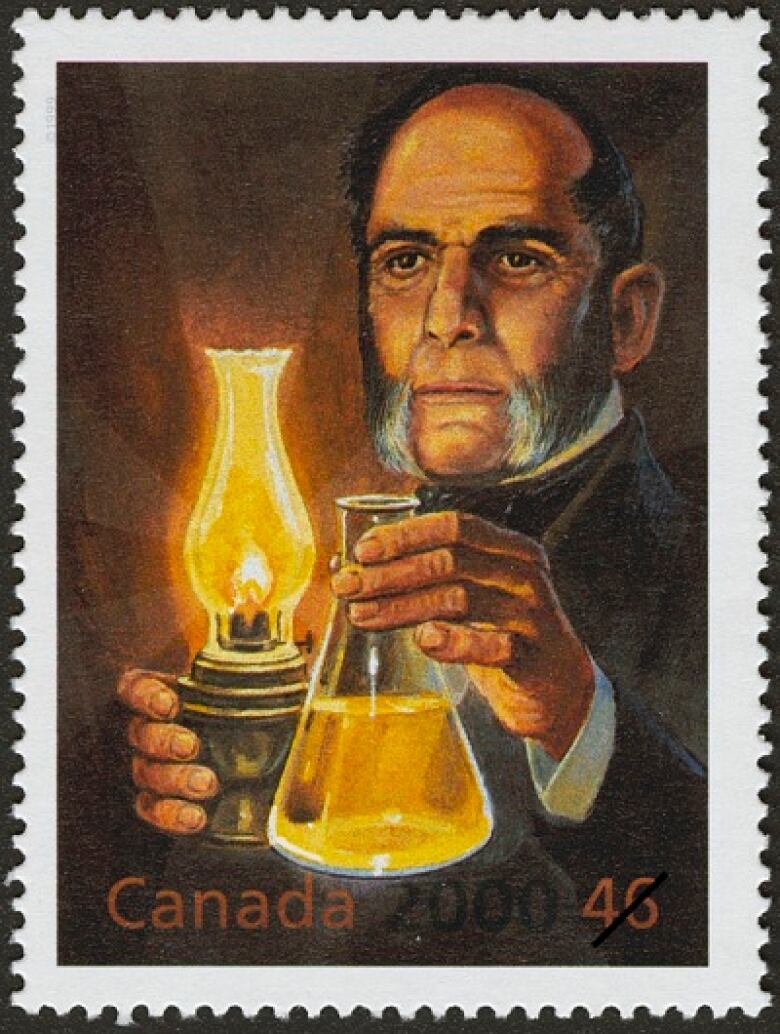
It was through that research that he discovered a shiny black rock classified as bitumen and named albertite after the area in Albert County.
An article in the Daily Telegraphon Nov.17, 1874, describedthe seams of albertite as"highly bituminous and burns well."
"The oil which oozes out of the bed of the seams of the rock is exceedingly heavy, something like molasses, and is considerable in quantity," it said.
Gesner would go on to be the first to developa process for distilling kerosene from albertite in1846.
"In the early days when they produced kerosene, a byproduct of that is what we now call gasoline," Upham said. "They thought it was useless. That's how early in this process we are. The first 40, 50 years of petroleum production gasoline was considered garbage and was burned off or chucked in the nearest river."
The kerosene, however, was extremely profitable, and Albert Mines went on to produce 200,000 tons of albertite over a 30-year span. Much of it was sent to Boston and New York to fueltheir street lamps.
"Their best year here was 23,000 tons of albertite came out of this hole," Upham said. "And they're selling it for 25-ish dollars a ton.So 23,000 times 25 in 1868and it was doing that every year."
Upham saidrevenues of $575,000 in a year wasa "shockingly large amount of money."
"So this place was famous for the better part of 25 years as being a place where, if you happen to have been lucky enough to have a stake in it, you were now almost shockingly wealthy as a result."
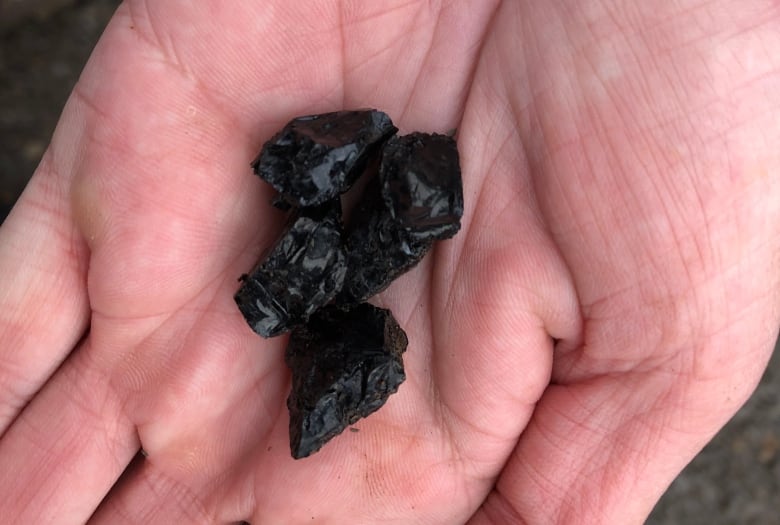
According to the Albert County Museum, Gesner himself never benefited from the operation. He lost control of the mine in 1852after a provincial court incorrectly ruled that albertite was coal, not bitumen.
The Daily Times explains in an article from May 12, 1914, how Gesner's contention that albertite "was and is a true asphaltic mineral" turned out to be correct and it should have been exempt from "Crown land regulations."
"Nearly five millionsof dollars were taken out of the Albert Mines before they were finally closed down."

Gesnermay not have become rich, but his research does live on. He established a natural history museum in Saint John in 1842 which eventually became part of the collection of the New Brunswick Museum.
Shaft as deep as Empire State Building is tall
When Upham visits the site, he is careful to avoid walking too close to the main shaft,which he describes as one of the most "incredible projects" that was undertaken by the miners who worked there.
"The shaft that was here was one of several shafts on the site. This one is six-feet deeper than the Empire State Building is tall.That was dug by hand, and most of it was done before the invention of dynamite."
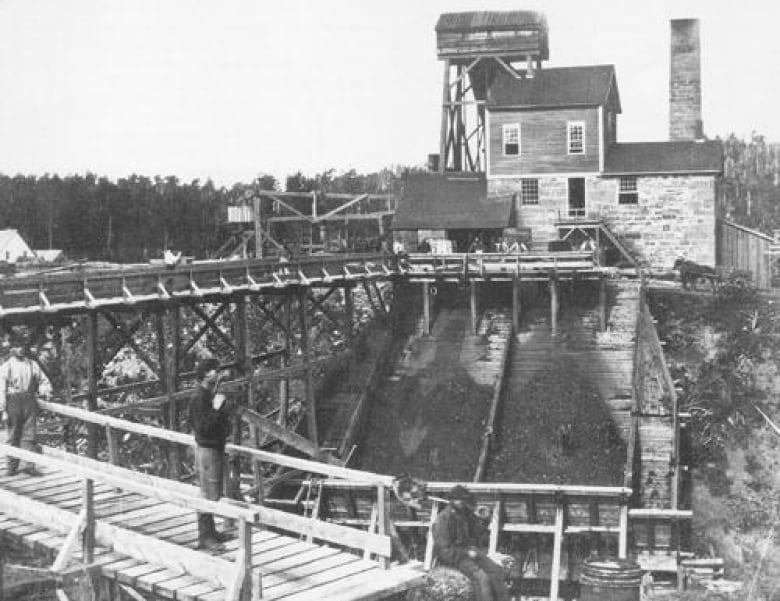
Uphamsaid the building that surrounded the main shaft was hugeand housed what was believed to be the largest steam engine in Canada at the time.
"Its only job was to keep water out of that mine," he said.
Despite the danger of extracting an "incredibly combustible material" from the depths of the earth, while wearinglanterns "so they can have a fire on the front of their head," Upham said the mine was known to have a remarkable safety record.
"They solved incredibly challenging problems here very regularly in a way that we kind of can't understand anymore. When I run into an issue, I pull out my phone and I Google it or I look it up these guys stood here and said,'OK, the mine's on fire, what do we do?'"
He said on more thanone occasion fire did break out in the Albert shaft, and the miners diverted a creek, and flooded it with water.
Eventually the albertitecame to an end and was "mined out" said Upham, and all that's left arethe tailings piles.
Even though the Albert Mines site is on private land and off limits to the public, and even though there is no sign to tell you what happened there, Upham is hopeful that will someday change and New Brunswick's part inworld history will be celebrated.
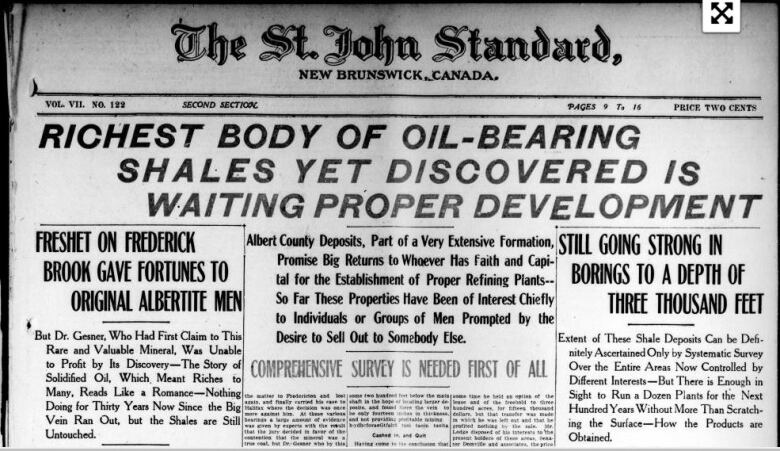
"So you know the ancients have a story about Prometheus, who stole fire from the gods and in so doing open Pandora's box. All gifts positive and negative. This is a place where that box was opened."
Upham said as our dependence on oil wanes, Albert Mines is "a bookend" in history now.
"This is the site where the modern relationship with fire fundamentally changed."
with files from Khalil Akhtar












_(720p).jpg)


 OFFICIAL HD MUSIC VIDEO.jpg)
.jpg)



























































































